

Suunto Blog
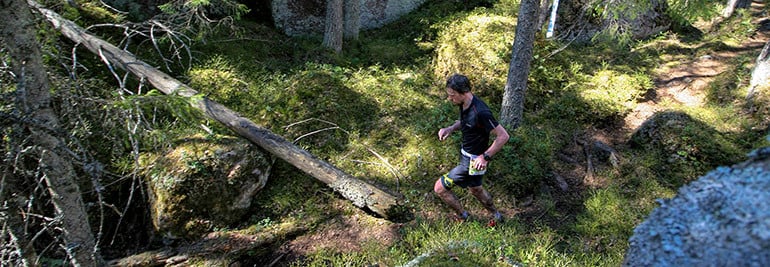
Congratulations to the Suunto Summit 2018 selections!
We are thrilled to announce the participants of our 2018 Suunto Summit! Congratulations to the selected individuals. We received incredibly inspiring applications from around the world, reminding us of the passion and engagement of our community. Thank you to everyone who applied!
The 2018 Suunto Summiteers are:
Aniol, Spain
Daniel, Switzerland / Spain
Dmytro, Ukraine
Julia, Finland
Leonardo, Italy
Maggie, UK
Patrick, France
Patrik, Slovakia
Sherry, USA
Tara, USA
Teoh, Malaysia
Valentin, Romania
Verónica, Ecuador
(All participants have been individually contacted by Suunto.)
Welcome to #suuntosummit, everyone!
***** 5 February 2018 *****
Suunto Summit 2018
Do you want to be a part of a weekend full of trail running in the Finnish forest, workshops on Suunto products, and a little sauna too? If you can get to Helsinki for 4-6.5, we’ll do the rest!If this sounds like your kind of weekend, fill in the application below and tell us why you’re passionate about sports and Suunto, and share your story with #suuntosummit
Applications are due by 22.2.2018. (Amer Sports employees are not eligible for this Suunto Summit)
APPLY NOW
Here's what the Summit looks like in action!
In 2017 we hosted an inspiring group of 16 Suunto fans from around the world for a weekend of sharing experiences – and some muddy Finnish trails.
Summit team gearing up for the start of the trail race
Serene moment for Sante in the forest
Ready for orienteering?
Summiteers celebrating at the finish of Bodom Trail
All images by Philipp Reiter

VO2 MAX IntervalS with XTerra champion Josiah Middaugh
“For years interval training has been considered the most potent form of training for an endurance athlete. Thanks to early running legends such as Paavo Nurmi , the flying Finn, and Emil Zatopek , the Czechoslovakian locomotive. They weren’t the first to implement interval training, but their straightforward approaches shaped modern distance running. Put simply, in order to race fast, you need to train fast,” writes Josiah Middaugh , XTERRA world champion and a professional coach. Read on to learn more about interval training.
In modern times, interval training is a fundamental way to train endurance performance. I overheard my 10-year-old telling his brother, “the best way to get faster is to do intervals, that’s what my gym teacher said.” For the general public, any intervals will do, but for the highly trained endurance athlete we need to get a little more scientific.
The basic premise of interval training is that you are able to swim, bike, or run at a higher intensity if your training is intermittent versus continuous. A 5k runner, for example, could head out the door and cover 3.1 miles as fast as possible a couple times a week, but would have a hard time holding their goal pace for much more than one mile. Instead, if the training was broken into half mile intervals, a race-pace could be achieved with every 800 meter bout as long as recovery was adequate. With each repeated bout there is a cumulative effect, up to a certain point, to stimulate adaptation. Beyond a certain point, maladaptation can occur.
Types of Intervals
In an effort to simplify we will focus our discussion on the most potent type of intervals known as VO2 max intervals. VO2 max is defined as an individual’s highest rate of oxygen consumption (milliliters of oxygen per kilogram of body weight per minute). A common misconception is that interval training is strictly anaerobic. These types of intervals do have a big anaerobic component, but by definition have you operating near your peak oxygen consumption, which is the key. Most athletes can work at VO2 max for only about 5 to 9 minutes, so intervals at VO2 max need to be shorter than that. If the interval is too short, then the anaerobic contribution is big, but there is not enough time to actually get to VO2 max. Personally I like 2-3 minutes ON with about equal recovery.
Pacing Strategy
Pacing is critical. Suppose you are running those 800 meter bouts and you start out by sprinting the first 200 meters and then have a gradual slow-down for the next 600 meters. Your average pace might be on target, but you have failed to reach VO2 max since you started with this huge anaerobic effort and then settled into a pace slower than your VO2 max intensity.
There is something called a slow-component to VO2 max. This means that for any pace above lactate threshold, you will eventually reach VO2 max if the exercise is continued. So you do want to go fast, but to spend the most amount of time near VO2 max, you want a pace you can sustain for 2-3 minutes. If performed correctly your oxygen consumption will approach VO2 max about half-way through each hard effort. So if your workout is 6 x 2.5 minutes, you might in reality only spend a total of 7.5 minutes at VO2 max, which is fine. If performed poorly you may only spend a few seconds of each interval at VO2 max or none at all.
Graph 1: Poor pacing strategy with high power output (purple) at the start of each bout and power dropping on each bout.
Graph 2: Better pacing strategy here. In this case, power (purple) within each bout was very consistent, but there was still a drop off in power for the last 3 bouts.
Graph 3: Power (white) fairly consistent throughout hard efforts. Notice peak heart rate (orange) is not achieved until the 6th bout. Different athletes, different software.
Work:Rest Ratios
An ideal range for work portion is about 1.5 to 4 minutes. We like the 2-3 minute range the best with a few exceptions. Work to rest ratios are usually around 1:1. The rest interval can be adjusted to increase or decrease the intensity of the workout. If you are having a hard time keeping pace, try adding 30 seconds rest. If you are completing the workout with energy to spare, try 30 seconds less rest the next time out.
How Intense?
Pace or power are your best guides for this type of training. Heart rate lags so far behind that it is not the best indicator and you don’t want to try to spike your heart rate to start each effort.
If you have power on the bike, I like to use 110% FTP for 3 minute bouts, and 115% FTP for 2 minute bouts.
For running, a 5k race pace or slightly faster will get you there. A 15 minute 5k runner can just use their 5k pace, but a 25 minute 5k runner might need to increase the pace slightly.
If you are performing intervals uphill and don’t have power or pace to guide you, try this approach. Warm up to the base of consistent climb. On your first bout, hold back a fraction and note your distance at 1 minute and 2 minutes. Make a mark in the dirt. Recover on the downhill and repeat the same section of the hill attempting to at least reach the same finishing mark or go slightly further. Try to do this without going any further for that first minute.
How Much?
I mentioned earlier that this is the most potent form of training. So your goal is to be able to maintain the quality for the entire workout. For most people this means 15-21 minutes of total hard work. So that is 8-10 bouts of 2 minutes, or 5-7 bouts of 3 minutes. Keep it simple. Shoot for a very similar intensity every time and if you start to slow down you have done too much.
How Often?
A little bit can go a long way. I try to space out this type of training more than any other. For most people that means two quality sessions per week with one on the bike and one on the run. Training becomes more polarized during a VO2 max cycle with recovery and endurance workouts separating VO2 max bouts. Total training volume is reduced and avoid excessively long workouts during this time.
Soon Ripe, Soon Rotten
With this type of training, most people will plateau in about 6 weeks. I like to sprinkle in this type of training as key races are approaching and save heavy blocks of VO2 max interval training for the most important races of the season.
Josiah Middaugh is the reigning XTERRA Pan America Champion and 2015 XTERRA World Champion. He has a master’s degree in kinesiology and has been a certified personal trainer for 15 years (NSCA-CSCS).
Get to know Josiah
Learn how to use Suunto Spartan's Interval feature
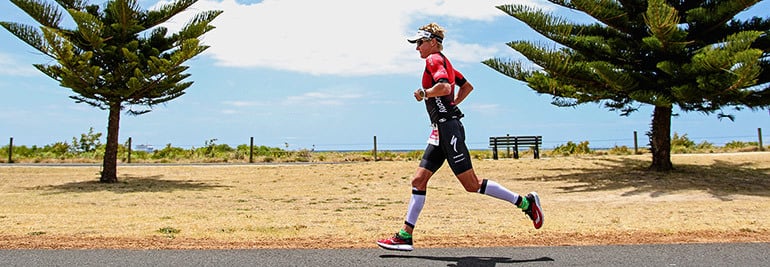
Meet Mel Hauschildt, one of the world’s best triathletes
Triathlete Mel Hauschildt is coming off what most would consider a banner year in 2016 – taking home podiums at the Euro Double during the summer, had a tremendous come-from-behind victory in Oz, and reclaimed the top spot in the world rankings coming in to 2017. Yet she’s still not satisfied. Read on to learn a little bit about the newest member of the Suunto team, who she is, and how she got here.
Most people call me Mel.
I’m from Queensland, Australia, and I do triathlon. I used to be a professional runner with my main events as the 1500m and 3k steeplechase.
I swapped to Tri in 2010 – I couldn’t afford to be a runner, and I kept getting injured. I gave triathlon a go, made some money, and kept doing it!
Mel's background is in running – but now she loves the bike. © Thierry Sourbier, onlinetri.com
I just jumped in.
I did a small local race one weekend before to put it all together, and then just jumped in a half Ironman.
The half is my favorite distance.
You can do 70.3 every weekend, and I like racing, so I do that. It’s not so tough on the body and you don’t need the recovery time of the longer races.
I only started swimming for real in 2010.
I never really liked the water, I was more a land person. I could swim, of course, every kid in Australia grows up at the beach – but I used to get my mom to write me notes to get out of swim class! Swim is still my weakest part of the race – I never enjoy a swim. My favorite swim is Sunday afternoon for an ocean swim. I don’t hate it like I did when I first started.
If I retired tomorrow I’d probably never get in the lap lane again.
I’ve tried everything in the water and don’t improve – I’d swim the same times if I swim 30k a week or if I sat in the chaise lounge next to the pool. It totally does my head in!
I love the bike.
I usually try and ride hard, and get to the front in the bike leg, and make up what I’ve lost in the swim. To be honest, it’s my favorite part of the race.
Mel on her way to a win in Ironman Western Australia in December. © witsup.com
But the run is my strongest leg.
I put more effort in the bike, but I can leave it all out there in the run – I think I have a better pace judgement in running, and know not to go out too fast. I’ve got a lot more KMs in my base as a runner than most triathletes.
My training is a little unorthodox.
I guess coming from a running background, I train quite differently – when I first started I went with a tri coach but I just didn’t agree with how he was doing things. Now my husband coaches me. I actually do a lot less running than most triathletes. I was getting a lot of injuries, so I bought a bike and got quite good at that. I do most of my base work there. I run up to 70k a week, where as most athletes do up to 100. But I do a lot more on the bike than them.
I’ve got a few injuries.
Most of my injuries have been in my running career – every stress fracture under the sun. I ruptured my hamstring tendon, after it had been tearing, but it wasn’t diagnosed, and it was six months till I got it fixed. So now I have two muscles going through one tendon. I have a broken rib that just won’t heal. That’s life!
I love the hometown crowd.
I used to always say Phuket was my favorite place to race – I just love the location. But the race has changed a bit, and now I really love racing in Australia – but I don’t get to race their often.
Stay tuned for Mel's triathlon training tips!
Main image © witsup.com
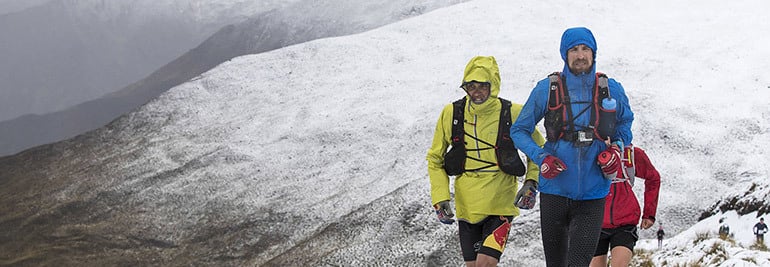
Meet the man you’ll want to train like for XTERRA 2017
Josiah Middaugh is the man most of you wish you could be – or at least, the man most of you wish you could race like. A professional triathlete for the last 14 years and the 2015 XTERRA World Champion, the Michigan-born ‘uphill runner’ is one of the toughest competitors on any XTERRA course. And the good news? Even if you can’t race like Josiah, this year, you’ll be able to train like him. Thanks to the new Suunto/XTERRA partnership, Middaugh will be passing on his training tips (and training tracks!) to you via articles on Suunto.com and his coach’s corner on XTERRAplanet.com. OK, ready to learn more about your new virtual coach? Read on.
I've always been a runner.
Yep – I was a cross country and indoor/outdoor track runner at Central Michigan, a D1 program, where I studied Exercise Science, which I then followed up with a Master’s in Kinesiology. After school I moved to Colorado, and it’s such an active community. I look out my window and see a bike riding by every few minutes. I got into triathlon almost immediately.
I like to run uphill.
And bike, too – I’m tall and skinny, but I still tend to do well on courses with big climbs, whether it’s on the bike or on foot. I think a lot of has to do with living altitude. My favorite XTERRA race location? I thrive on mountain courses – any kind of course that requires a big engine – especially with sustained climbing, that’s where I excel. Swimming is my weakness, but I make up for it on the uphill. Two of my favorite races are the Beaver Creek XTERRA, right in my backyard, and the National Championships in Ogden, Utah.
The toughest races are in Hawaii.
No question! Last year in Kapalua, Maui, we had a ton of mud on the course. It was the first time we encountered that at a World Championship. It wreaked havoc on bikes and drive trains, and it came down to whose bike held up on the mud. Down in Wailea, also on Maui, I had flat tires four out of ten years racing there. That made for interesting races! Carrying the bike, carrying wheels, tubes wrapped around my neck… but I’ve always finished the race!
Cross training is important...
I do more consistent strength training in the winter, and take advantage of the winter environment with snowshoeing, nordic skiing, and a bit of fat-biking. Not quite as much alpine skiing as I’d like to fit in.
...But not as important as regular training, done right.
I’ve been using Suunto products for a while, starting with the original multi-sport watches from nearly a decade ago. I’ve always taken a very scientific approach, and that turned me on to Suunto products. Mainly, I’m looking for objective ways to measure intensity and training load. It depends on the sport that I’m doing – pace if I’m running flat ground, heart rate if I’m running up Vail Mt with snowshoes, power on the road bike. But it’s all a guide – I’m not locked into any one metric. For 2017 I’m refining my approach – last year I had come off the championship win, and did a lot of racing all over the world, ‘saying yes’ to everything – I spread myself pretty thin. This year I’m competing less, training smarter and more efficiently, and will build in a little more spacing between my key competitions.
One guy I can’t shake is Braden Currie.
XTERRA is a race against mother nature – but I can’t seem to get away from Kiwi Braden Currie. I’ve been locked into many man-on-man battles with him over the years – including an epic photo finish last year. But we just had a fun race together on the same team for once at his event in New Zealand.
I’m ready for battle in 2017.
I’m feeling strong and healthy, ready to go for another year. Motivation is high! It’s still really early, but I think I’m setting myself up for another good year. First race of the year is in Costa Rica!
Ready to have your best year of racing yet? Then stay tuned for Josiah’s training tips on suunto.com – and make sure you check into the Middaugh Training Corner on XTERRAplanet.com.
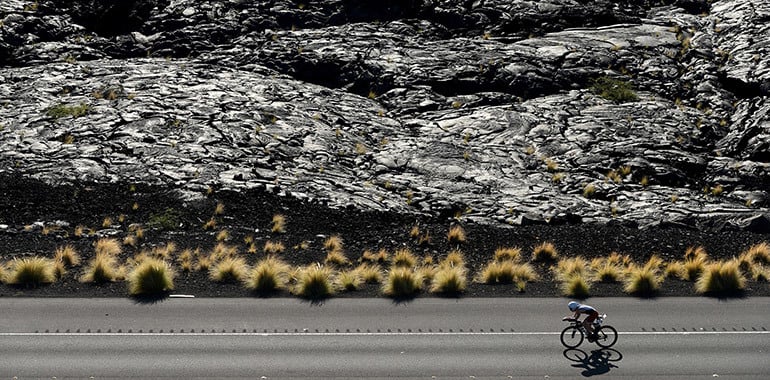
The legend of Kona
If there’s one word that will strike fear and awe into an iron distance athlete it’s Kona. It’s the race every triathlete aspires to do – at least once. What’s behind it’s magnetic pull? Ahead of the 2015 edition of the race this Saturday, we set out to find out.
Last year marked the 25th anniversary of an event remembered only by hardcore Ironman fans but it’s one that symbolizes much about the epic race – the struggle, the glory and the pain involved.
It was the year of the so-called ‘Iron War’, an epic duel between arch rivals Mark Allen and Dave Scott at the 1989 Ironman World Championship in which they fought neck and neck over the 226.2km course to finish just 58 seconds apart. The fierce rivalry and incredible endurance of the two athletes set the stage for the race to become one of the most popular challenges to feature on anyone’s ticklist. “The spirit of Kona is really special,” says Suunto 9 product manager Markus Kemetter, who has competed in the race three times. “It’s the legendary place where Ironman triathlon was born and the race where the best-of the-best in long distance triathlon are competing every year.
"It’s also one of a few races where most of the competitors are present at the location for a whole week before the race so you can see the world’s best triathletes walking around the village.”The fact that it’s been nearly the same course over the years adds to its attraction, says pro athlete Åsa Lundström. “That means that all the legends of my sport have been racing on the same circuit. Every corner has stories to tell of legendary clashes of triathlon titans. And the best part is that you have the opportunity to be a part of those stories in the future.”
The race was famously the brainchild of a Naval officer John Collins, whose idea was to combine the three toughest endurance races on Hawaii into one race. What followed was a challenge to endurance athletes to see who was the toughest: swimmers, bikers or runners? On February 18, 1978, 15 competitors took part in the first ever Ironman. It is now one of the most highly sought after – and difficult to enter races on the planet. A victim of its own popularity, competitors have to qualify to enter and it’s intensely competitive – 80,000 will vie for just 2,000 slots.
“It’s so competitive now,” says triathlon coach and ex-pro Richard Hobson, who competed in 1994, 1995 and then again in 2010. “To win my age group I’d have to race as fast as I was as a pro.” The experience of taking part can vary hugely for athletes, he adds. “When you race as a pro it’s all about doing well but it can be a pretty miserable experience. It was only having coached people who'd had such amazing experiences that I realised it’s not just about the race, but everything around it.” Mainstays of Ironman tradition now include the Underpants Run, a 2.4km pre-race fundraiser. What started out as a protest against athletes wearing speedos around town is now an established pre-race event.
Apart from the atmosphere the one thing that makes Kona unique is the location itself and the course. It’s famed for its heat, humidity and wind. The swim is relatively straightforward provided the sea is calm but the bike leg can be brutal. “The ocean is impressive, but not the big challenge of the race,” Suunto's Kemetter says. “The challenge starts on the cycling leg where strong side and head winds are common and can be strong enough to throw you off your bike. The black volcanic landscape is beautiful and the wide open views from ‘Queen K’, the famous highway leading to the turn point at Havi, are just amazing.
“On the run the countdown starts. This is when your ability to withstand the heat, control your energy and hydration is truly tested. The run starts at the hottest time of the day and sucks everything out of you by the time you finish.
“Crossing the finish line at Ali'i Drive in Kona is one of the greatest moments in a triathlete’s life.”
For pro athletes such as Lundström taking part, there’s only one thing on her her mind – and that’s to do well. “I raced last year but the saying is that it takes one tri run to get to know the race. That means that this year will be the first time I can really hit it and don't have to hold back! I know that I have the potential of top 10.” For other athletes, Hobson advises not to go with the goal of doing well. “Go out to have a fun experience and enjoy the whole thing. So often people spend so long trying to qualify and they have a bad race and wonder what it was all about. You have to enjoy being out there and chances are, if you do that, you will have a good race.”
Images © Donald Miralle
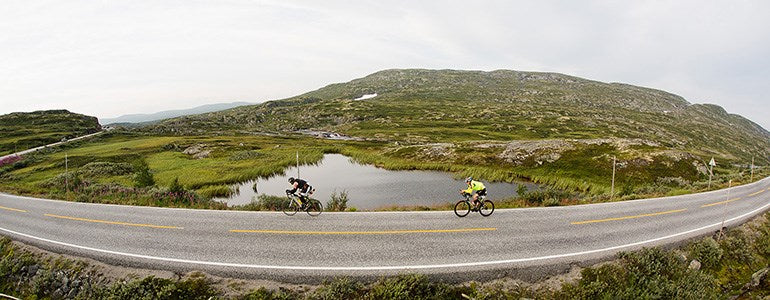
Meet the Norseman!
This weekend sees one of the world’s toughest triathlons take place, the Isklar Norseman. It’s a unique unsupported triathlon featuring a 3.8km swim in the frigid waters of the Hardangerfjord, a 180km bike ride, and is followed by a full marathon with a sting in the tail – an ascent of 1,800 m Gaustatoppen. The total ascent is 5,000 meters. Entrants are warned that they may get ‘unusually emotional’. On the start line will be pro-triathlete and elite Ironman athlete Teemu Lemmettylä. And he’s going out to win. One day before the race, he gives us the race lowdown.
The Norseman proves too much for one competitor. ©agurtxane concellon
Why do it?
The history and the fame of the race… it’s the most challenging xtri competition!
Physically, how much more challenging is it than a regular Ironman? It’s hard to say because Ironman is always an all-out effort. Pushing too hard at the beginning is much more costly in this type of race. I expect that the bigger difference compared will be on the mental side. You have to keep your head together.
The marathon ends with a brutal ascent of Gaustatoppen. ©Jóse luis hourcade
How have you had to prepare differently? On cycling I have had to spent more time in up-hills during the training camps and generally put more focus on cycling because the bike leg is challenging and takes a long time. I have been working on my uphill running and used much more trails. However running hours have been similar to previous years.
Teemu Lemmettylä is an elite Ironman athlete. ©Teemu Lemmettylä
Are you concerned about conditions? Weather can range from beautifully sunny to blizzard? Training in Finland contains enough cold and bad weather which should not be a problem!
Do you think you can win? Anything is possible. On regular triathlon I should be the best from the pack. But this is my first Norseman – it’s just impossible to say for sure.
The race begins with an early start – and a cold one! ©Dag Oliver
Main header image: ©Jóse luis hourcade





























































